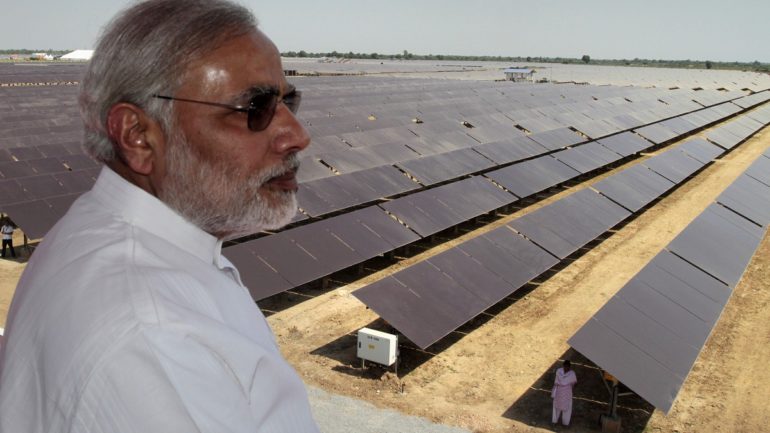Blog

Originally published in The Energy Collective.
India’s turn toward renewable energy has been widely hailed, but the future promises challenges that put the country’s climate leadership to test.
When Donald Trump announced that the U.S. was to withdraw from the Paris climate agreement, India’s Prime Minister, Narendra Modi, said that his country would go “above and beyond” the treaty. Modi’s statement was widely hailed as a signal of India’s emerging climate leadership.
There is something to Modi’s claims. India has set an aggressive target of achieving 175 gigawatts of renewable power capacity by 2022, and the construction of coal-fired power plants has all but collapsed because of record-low solar power costs. India has also invested in energy efficiency and pioneered the International Solar Alliance.
These achievements are truly notable for a country that suffers from widespread poverty. Anywhere between two to three hundred million Indians still have no electricity at home. For those who have access to power, outages remain common. A 2014 rural survey found that grid-connected households in Uttar Pradesh and Bihar – states with a total population of three hundred million people – had fewer than ten hours of power on a typical day.
But while India’s actions deserve applause, Modi’s claim to climate leadership remains far from certain. The past few years have treated the prospective climate leader gently, and the future could bring many new challenges.
One reason for India’s ability to halt the construction of coal-fired power plants is that disappointing industrial growth has led to lower than expected power demand. For the past three decades, the Central Electricity Authority of India has consistently over-projected the growth of power demand. Between 2012-2017, the authorities predicted peak demand to grow 8.5% a year, but the real growth was only 4.9% per annum.
If India’s drive to industrialize grew more robust, the demand for new power generation capacity could grow much faster. Policymakers might hesitate to shut down coal-fired power plants, and India would remain dependent on coal for a long time. Modi’s government has also formulated an ambitious plan to provide every home in India with 24 hours of power on a daily basis. Any progress toward meeting this goal increases power demand and puts pressure on the government to build more power plants.
Published in June 2017, India’s Draft National Energy Policy predicts that even under ambitious energy conservation and renewable energy policy, total coal-fired power generation capacity grows to 330 gigawatts from two hundred today. Robust economic growth would contribute to a rapid growth in power demand, and coal would remain an important fuel for India’s engine. Under these conditions, India would be a major obstacle to limiting global warming under the Paris Agreement.
India is also still far from the point at which natural fluctuation – intermittency – in solar and wind power generation begins to create systemic problems. As India’s renewable generation capacity grows, grid stability becomes an increasingly important challenge. Although a recent technical study found that India’s renewable energy targets need not compromise grid stability, achieving this goal is a major challenge for India’s strained regulatory system and electric utilities. The state-owned power sector suffers from serious financial, technical, and institutional problems. Indian electric utilities will face major challenges in managing the growth of renewables, and the state governments would pay a political price for increased outages.
India’s turn toward renewable energy has earned its applause, but the fact remains that Prime Minister Modi’s climate leadership has not yet been tested. Given India’s pivotal role in global climate policy, addressing the country’s energy problems is a challenge of global importance. Indian policymakers should prepare for them well in advance, and the international community should offer their full financial and technical support to help India continue its climate leadership.
